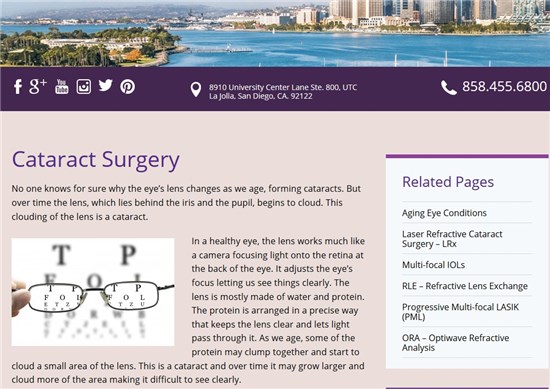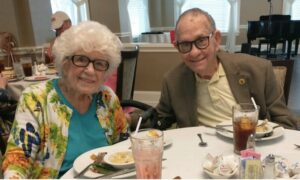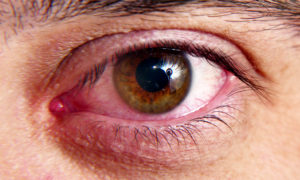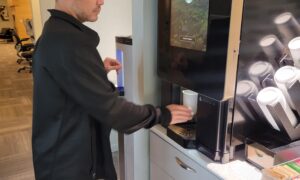By David I. Geffen, OD, FAAO
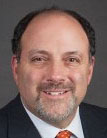
Nov. 11, 2015
SYNOPSIS
Capture the fast-growing senior demographic by meeting special needs and providing superior care & service.
ACTION POINTS
DOCUMENT SPECIAL NEEDS. Make a note in patient records about needed mobility or cognitive accommodations.
TRAIN PATIENCE & EFFICIENCY. Staff need to be trained to be patient and make seniors feel special, but also how to move them through the office efficiently.
USE PORTABLE INSTRUMENTS. Instruments that you can move to suit the patient, rather than the other way around, can aid those with mobility issues.
The senior population in the U.S. is the fastest growing segment of the population. Serve these patients well, and your practice will also will grow.
The older population—persons 65 years or older—numbered 44.7 million in 2013 (the latest year for which data is available), according to the Administration for Community Living, part of the U.S. Department of Health and Human Services. They represented 14.1 percent of the U.S. population, about one in every seven Americans. People 65+ are expected to grow to be 21.7 percent of the population by 2040.
About 40 percent of my practice, which includes both MDs and ODs, is comprised of senior patients.
Seniors require more time–and staff hiring/training/sensitivity. Some seniors are slower and have more questions, so some may require more time in the exam chair. This could possibly create a slightly higher chair cost. Staff training takes time, and has costs associated with it, but we do training specifically for working with seniors on a regular basis.
The flip side of accommodating seniors is, with greater health care and eyecare needs, comes greater revenues. Since seniors have more medical problems, like AMD and glaucoma, they will generate much higher rates of medical billings.
Dr. Geffen’s practice web siteeducates patients about a host of aging eye conditions like cataracts.While serving senior patients, Dr. Geffen says, avoid generalizing or making assumptions about their facility with technology.
Note Added Needs & Accommodate
Since we are located in a more affluent area of San Diego, Calif., in which most elderly persons have access to health care, the majority of our seniors are in good physical condition. However, we do have some wheelchair-bound patients. Serving these patients is no problem as the office is handicap accessible. We have elevators and wide doors to accommodate people with disabilities.
Patience, patience, patience–that is the most important thing to remember when serving senior patients. Many seniors are in no hurry and like to shoot the bull. The visit to your office is probably the big highlight of their day.
So, staff need to become adept at making the patient feel like they are the most important thing they are doing that day, but also be able to move the patient through pre-testing efficiently. Our experienced pre-testing technicians train new employees on how to get senior patients through pre-testing smoothly.
Document Patients Who Need Accommodations
We do not routinely add additional time to senior exam slots unless the doctor has made a note in the patient’s record indicating a need for more time. We cannot tell which patients will need some more time since most of our elderly patients are in good health overall for their age.
Contact Family Member When Necessary
Most of our seniors are mentally competent to complete the exam, but those who aren’t need someone to accompany them. Those who need this almost always have someone with them. For the rare occasion that a patient comes in, and is not totally competent, we attempt to contact a family member.
When a caregiver is present, it is important to continue to address the patient directly to not make them feel bad, or like they are being disregarded. But any recommendations need to be made to the caregiver, too.
Use Portable Instruments
Portable instruments make senior exams much easier, especially tonometry and ophthalmoscopy. Exam chairs with movable foot rests that can be moved from side to side, and movable arms, also help. Slit lamps may not be usable, so a portable anterior segment camera helps. Pulling up the foot rest and pulling up the arm, and turning the chair to the side, assists in getting the patient in.
Don’t Assume Seniors Are Technology Illiterate
More and more seniors are enjoying computer use today. Don’t assume that a senior patient is computer illiterate. It is best to ask seniors, like all patients, how they would like to be communicated with. EHR greatly assists with this giving options for communicating with seniors, and all patients. Having online access to information allows the patient to review information with their families when they get home, and to print it out if they like. For those without computers at home, we can print materials out for them in the office, before they leave.
Educate Seniors On Benefits
We accept Medicare, and most seniors we see have a good understanding of their benefits. The only confusion may occur in explaining what is not covered. It is important that your office take the time to fully answer senior questions about coverage, and explain that certain services or procedures are covered, while others are not. Seniors should leave your office feeling like they have been treated fairly, and have been well served.
David I. Geffen, OD, FAAO, is a partnerin Gordon-Weiss-Schanzlin Vision Institute in La Jolla, Calif. To contact: dig2020@aol.com

